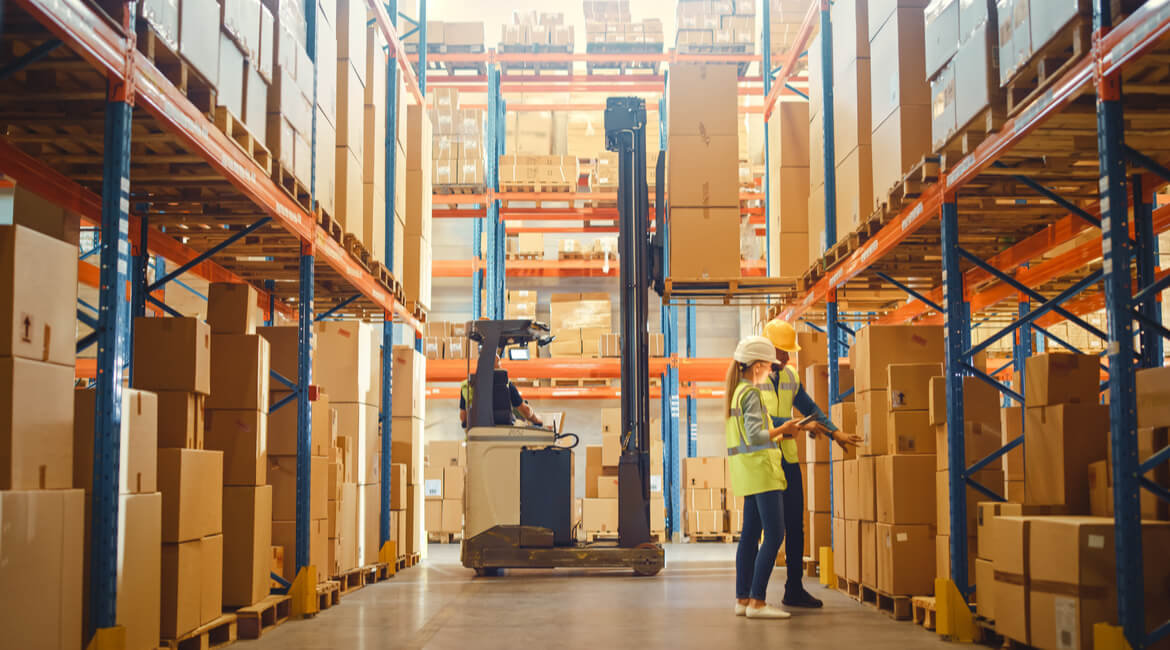Industrial safety with RTLS locating solutions

The experience acquired by Industry 4.0 technologies has made it possible to create hybrid environments, where machines and workers join forces with production processes. This, on one hand, allows companies to free the workforce from routine tasks, making processes more efficient and optimizing production. On the other hand, the use of these technologies in no longer confined areas, but in contact with the workforce, poses new challenges to industrial safety.
Industrial safety: challenges in different areas of use
Safety management and industrial safety are often seen as “nuisances” by companies. However, technologies able to optimize and improve the management of all company’s assets exist and lead to several benefits – such as a risk reduction and an increase in efficiency and productivity.
Whether it’s the shop floor or the warehouse, there are many variables that can affect both the workers’ and the company’s assets’ safety. For this reason, the adoption of an exclusively reactive, i.e. post-event approach to safety management is not a competitive choice for companies: production stops, due to collision of handling equipment or accidents involving workers lead to a significant cost.
The theme of safety, in addition, is becoming more and more compelling in the industry. In fact, the introduction of automation technologies in the era of Industry 4.0 has led manufacturing to further focus on the well-being of workers.
The automation of processes at low specialization has introduced new models for the evaluation of the workforce, with a focus on time and safety. Still, the demand for more efficient processes is growing, in the perspective of a smarter and more sustainable use of all assets of companies.
RTLS locating solutions for industrial safety
Also in this area, a data-driven approach – based on the acquisition of data associated to the behavior of workers and assets to get useful and insightful metrics and information – allows companies to develop risk prevention strategies, customized according to their targets. The foundation of this approach lies in the tracking sensors and RTLS solutions (Real-Time Locating System), that allow to locate in real time the position of the company’s assets and the workers (whilst fully respecting their privacy) through different technologies.
From Bluetooth to GPS, to UWB technology (Ultra wideband): depending on the needs and fields of application, RTLS solutions allow extremely accurate trackings. Not to mention that the integration of hardware devices with locating software platforms helps companies detect, manage, analyze and thus prevent numerous risk factors.
Real-time locating, some application examples for industrial safety
An application example comes from the use of collision avoidance systems. These reduce the likelihood and number of accidents involving handling equipment (such as forklifts) and personnel.
Starting from a position, these technologies are able to calculate, with extreme precision and in real time, the distance between two vehicles handling loads or between the handling equipment and the workers. Once the safety thresholds are surpassed, the devices activate to highlight the danger and intervene on the vehicle, reducing the speed of movement.
In addition: whilst exploiting location and telemetry data, some locating software platforms can also provide reports on the near-miss events, i.e., nearly occurred accidents. A strategic insight for companies, as it allows them to identify the areas that are most at risk in the production zones and warehouses. By analyzing traffic flows in a given area, it is possible to develop a more efficient and safe strategy in the use of assets.
Locating systems for the safety of industrial workers
Direct locating RTLS solutions are particularly helpful in all those circumstances where it is necessary to trace the position of workers.
These systems lead to a better workforce management, and preserve the facility’s safety too: through the adoption of this technology the company can set different types of access, depending on the duties and specialization of workers. This allows, for example, to restrict access to areas which are particularly exposed to risks, allowing the entry to only authorized personnel.
Industrial safety, how to leverage RTLS solutions to ensure compliance with safety measures
Also, the integration of RTLS solutions with locating platforms allows companies to ensure that the workforce respects all safety measures.
The worker is tracked throughout the work shift and the various areas of the facility, thanks to the use of RTLS devices. Data are sent to the platform, which tracks the worker’s position in real time, both indoor and outdoor.
The use of these sensors applied to personal protective devices helps the company ensure that the workforce takes all necessary precautions.
All in the respect for the privacy of workers, a very sensitive topic when it comes to data collection and data management. Therefore, the most innovative RTLS systems can be configured to guarantee, if required, the anonymity of the data collected.
